Pinus sylvestris
Pinus sylvestris Scotch pine
Scotch or Scots pine is introduced from Europe as one of the first species and has been planted for reforestation and horticulture. While it prefers drained, sandy soils it is tolerant of various soil and moisture conditions, but not tolerant of shade. It is most easily identified by the bright, orange-red color of its upper bark that peels off from the branches.
Habitat & Range
Grows in well-drained, sandy soils in the sun. Frequent in forest plantations, hedgerows and old fields.
See distribution map at BONAP.
Wetland code: Not classified
Characteristics
Tree trunk single and often crooked, crown spreading & irregular
Needles 2 per cluster, stiff, twisted and pointed; 1½ to 3 inches long
Twigs somewhat stout, brittle, smooth
Bark upper is orange-red and papery, lower orange-brown and flaky
Seed Cones oval, on a short stalk in clusters of 2 or 3; can be pointed backward up the branch; 1-1½ inches long
Height 30-80 feet avg. height; can reach up to 120 feet
Fall Color evergreen
Age 100-150 yrs
Identification Tips
2 needles per cluster; orange-red, peeling upper bark
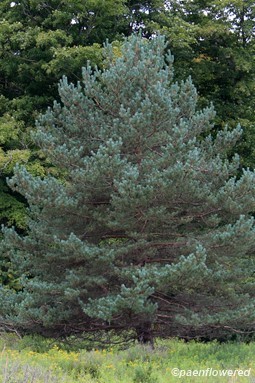
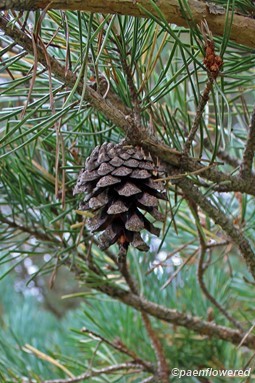
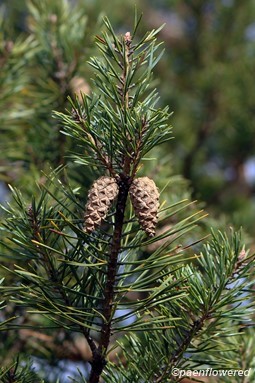

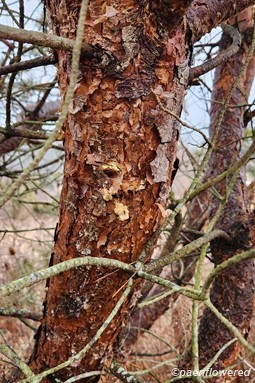
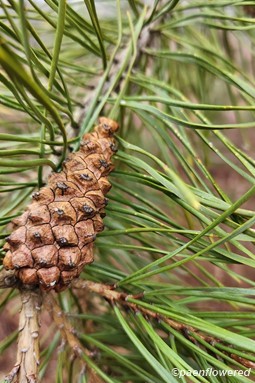








Comments
Have you spotted this plant in your area? We'd love to hear about your experience! Share your comments or questions about the plant below. Comments are moderated before posting.